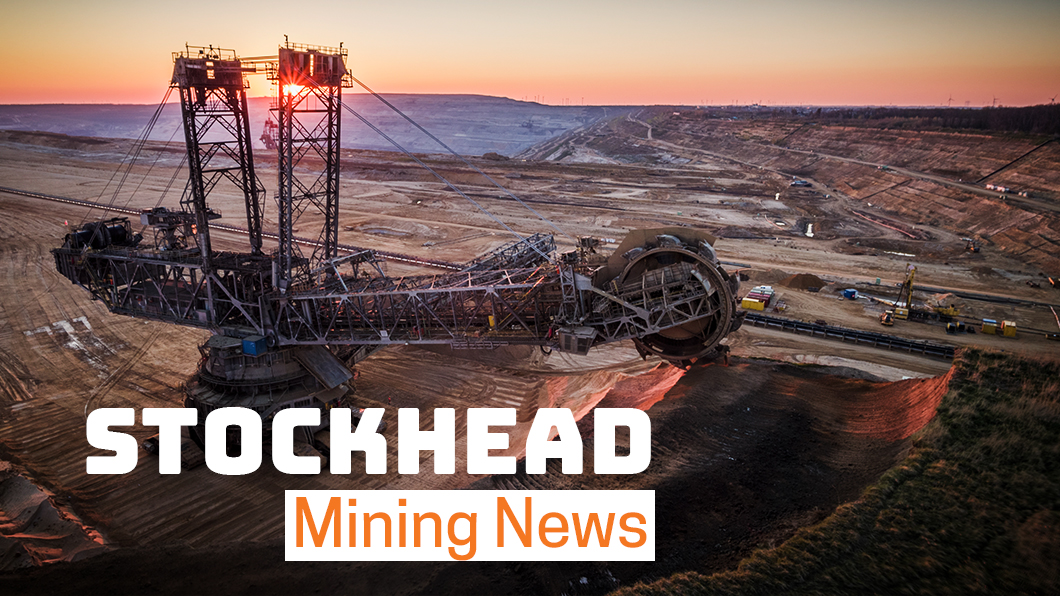As talk of a boom returns, Rio Tinto is planning to open one of the world’s biggest lithium mines in Serbia

Pic: Schroptschop / E+ via Getty Images
Rio Tinto (ASX:RIO) has put the ball in the court of Serbian authorities by saying it will invest $2.4 billion to open Europe’s largest lithium mine in the Balkan nation.
Located in Loznica, about 140km west of the capital of Belgrade, the mine is expected to produce 58,000t of lithium carbonate, 160,000t of boric acid and 255,000t of sodium sulphate a year from 2026.
Despite having no prior exposure to battery metals, that would be enough to automatically make Rio one of the world’s 10 top lithium producers.
That will come from the underground mining of jadarite, a unique mineral discovered by Rio Tinto geologists at the site in 2004 which scientists jokingly refer to as kryptonite because it mimics the chemistry of the fictional rock from the Superman comics.
Like many proposed lithium developments in Europe, the mine has faced opposition from within the local community, and Rio Tinto is anxiously awaiting approvals of an exploitation licence and its environmental impact assessment which will shortly be released for public comment.
“We have great confidence in the Jadar project and are ready to invest, subject to approvals,” Rio CEO Jakob Stausholm said in a statement yesterday.
“Serbia and Rio Tinto will be well-positioned to capture the opportunity offered by rising demand for lithium, driven by the global energy transition and the project will strengthen our offering, particularly to the European market.
“It could supply enough lithium to power over one million electric vehicles per year.
“The Jadar deposit and its unique mineral, Jadarite, discovered by Rio Tinto geologists in 2004, contains high-grade mineralisation of boron and lithium, supporting a long-life operation in the first quartile of the cost curve for both products.”
It came as a cashed-up Rio announced underlying earnings of US$12.2 billion in the first half of 2021 on the back of higher prices for iron ore, aluminium and copper, which drove net cash flow 143% higher on the same period in 2020 to US$13.7 billion.
Rio will pay a US$5.61 ($7.60) interim dividend worth an incredible $US9.1 billion, more than its total dividends for all of 2020.
Rio Tinto share price today:
Rio times the lithium revival
Prices for lithium carbonate and hydroxide chemicals have skyrocketed this year as increased demand from EVs has reversed the oversupply issues that caused a sharp downturn in 2018 and 2019.
According to Benchmark Minerals Intelligence, battery grade carbonate prices this month were up 101% YTD to between US$13,325-13,950/t, while hydroxide prices have spiked 85.7%.
There are now warnings of a ‘perpetual deficit’ from Macquarie Bank.
BMI says as things stand Rio’s Jadar project would provide a bit under 5% of world lithium chemical supply once fully ramped up in 2029 and up to 9% of the world’s lithium carbonate output.
Even with the addition of Jadar, with the expected pace of the transition from internal combustion engine to EV vehicles the lithium market will have a 915,000t LCE deficit in 2029.
That is a supply-demand gap more than twice the size of the current lithium market.
“There is little doubt that any new supply of lithium carbonate that can be used in a battery cell will be in high demand as the great raw material disconnect continues to widen,” BMI said.
The consultancy sees Rio becoming more aggressive once the mine is in construction and the technology is commercialised, saying it could make a decision to ramp up production to 120,000tpa of LCE in 2027.
“This is a significant moment for the lithium industry,” BMI managing director Simon Moores said.
“It marks the first time big outside money from a single miner or chemical maker has entered lithium and invested in an entirely new source.
“While expectation is that Rio Tinto will produce lithium carbonate at a run rate of 58,000 tonnes at full production, the strategy is usually more aggressive once proof of production is achieved and the product is accepted by battery and EV makers.”
Jadar could open door for major lithium M&A
The big diversified miners are enjoying their biggest ever payday from record iron ore prices and have so far only taken baby steps to enter the battery metals sector.
For BHP, that has largely come not in lithium but by reviving its once flagging WA nickel division Nickel West, which last week signed a deal with Tesla to provide nickel sulphate for its EVs and batteries.
BHP re-upped that commitment yesterday by outbidding Andrew Forrest’s Wyloo Metals for Canada’s Noront Resources, which owns what many regard to be one of the most exciting North American nickel discoveries since Voisey’s Bay.
Once it has a foothold in the lithium space, BMI sees Rio pursuing aggressive growth in the sector.
“It also sees Rio Tinto enter the lithium market in a serious way for the first time, opening the door to future acquisitions of both hard rock miners, brine extractors, and chemical makers as the world’s third biggest commodity giant positions itself for the electric vehicle ramp up,” they said.
“Considering Rio Tinto’s potential future profits from other commodities – especially iron ore – lithium M&A is likely a formality in the coming years.”
Rio approval could be a trigger for juniors
It is no secret that a number of international mining companies have struggled with the task of getting the community onside to deliver major projects in Europe.
Despite overtaking China as the market with the highest EV sales in the world in 2020, the continent currently does not produce any lithium at all.
Rio’s pitch is that Jadar will create, on its own, around 1% of Serbia’s GDP directly and another 4% indirectly, creating 2100 jobs during the construction phase and another 1000 during operations.
Should the lithium borate development get approved it will send a positive signal for juniors looking to develop projects in Europe, in particular in Serbia itself.
The other major resource in Serbia is private Canadian company Euro Lithium+, whose Valjevo deposit includes 1.7Mt of indicated resources at 1.98% borate and 0.41% lithium carbonate equivalent.
Balkan Minerals and Mining (ASX:BMM), a spinoff from Jadar Resources (ASX:JDR), owns the Rekovac lithium-borate project in Serbia where previous diamond drilling recorded lithium and borate mineralisation of up to 20,000ppm B2O3 and 969ppm Li2O.
Elsewhere in Europe ASX market darling Vulcan Energy Resources (ASX:VUL) is at the DFS stage for its Upper Rhine Valley “Zero Carbon” lithium project, a mixed geothermal energy and 40,000tpa lithium chemical business aiming to extract lithium rich brines from geothermal fluid production wells.
European Lithium (ASX:EUR) is completing an infill drilling program at its Wolfsberg lithium project in Austria, where it is aiming to complete a DFS by 2022.
The project has a current Measured and Indicated mineral resource of 6.3 million tonnes at 1.17% lithium oxide, with additional inferred resources of 4.98Mt at 0.78% lithium oxide.
At Stockhead, we tell it like it is. While European Lithium is a Stockhead advertiser, it did not sponsor this article.
Related Topics

UNLOCK INSIGHTS
Discover the untold stories of emerging ASX stocks.
Daily news and expert analysis, it's free to subscribe.
By proceeding, you confirm you understand that we handle personal information in accordance with our Privacy Policy.








